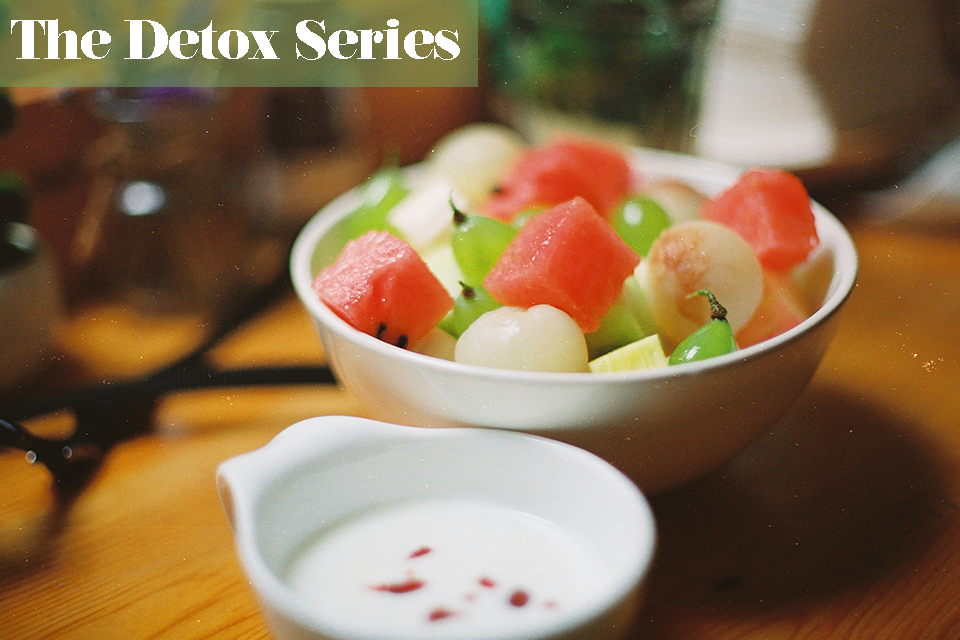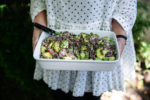Avoid Getting HIT with These Low Histamine Fruits
If you are looking for more options for low histamine fruits, you came to the right place!
Are you running out of choices for low histamine fruits?
Many people on a low histamine diet would agree that their food choices could get more limited and boring at the same time.
If you are looking for more options for low histamine fruits, you came to the right place!
In this article, we will identify fruits that contain low histamine, and you will learn some creative ideas to enjoy them as part of your meals – on a different level.
Before we dive into the list of low histamine fruits, let’s understand what histamine intolerance and low histamine diets are all about.
What is Histamine Intolerance?
People often ask the question: “Is histamine intolerance real?”
Yes, histamine intolerance is real.
Sensitivity to histamine, or histamine intolerance (HIT), is a condition wherein your body adversely reacts to histamine and causes certain allergic reactions.
Symptoms like itchy skin, hives, flushing, headache, respiratory allergies, and gastrointestinal disturbances are common allergic reactions caused by elevated histamine levels in the body.
Why does this happen?
Histamine intolerance happens because your gut may not have enough digestive enzymes called diamine oxidase (DAO), responsible for the breakdown of excess histamine in the body.
The tough part about having histamine intolerance (HIT) is that there is no cure.
Hence, people with histamine intolerance have no choice but to live with it. However, this condition is easy to manage.
To prevent you from getting HIT, diet experts advise eating a low histamine diet!
The goal of a low histamine diet is to keep your histamine levels under controlso that you can live life as if you didn’t have this condition in the first place.
How to Lower Histamine Levels?
A low histamine diet is usually prescribed by a licensed dietitian for individuals who need to have their histamine levels in check.
The intention of using a dietary management plan is to prevent the emergence of allergy-like symptoms by following the elimination diet method. In the elimination diet, you reduce or eliminate foods that trigger the histamine intolerance symptoms.
You will be required to avoid foods that contain high amounts of histamine,such as fermented, pickled, or aged foods, highly processed seafood or meat products, alcoholic beverages, certain condiments or seasoning, bloody fishes, and spoiled food or leftovers.
Any food that triggers histamine intolerance symptoms is eliminated from your diet within 10 to 14 days.
Then, these foods will be reintroduced later, one at a time, while you document the symptoms that show a reaction.
A typical low histamine diet requires that you consume fresh foods as they have low amounts of histamines.
When you’re on a low histamine diet, it is important to ensure that you are getting the essential nutrients your body needs despite the limited food choices on this diet.
Low Histamine Fruits
Incorporating fruits as part of your healthy diet reduces your risk of acquiring lifestyle diseases, such as cancer, heart diseases, and diabetes mellitus.
Making them a part of your diet is beneficial, so it’s important to know which fruits allow you to keep a healthy fruit intake while keeping histamine levels low.
When you shop, see to it that you are getting the freshest fruits in the market as they are identified to have lower histamine levels.
In addition, the fruits listed below are low histamine fruits. We’ve also included ways to prepare them!
- Apple
Aside from the common Fuji apples, don’t forget gala, Granny Smith (green apples), ambrosia, juice, and many more.
Dip your apples in your homemade salted caramel sauce. Or, don’t forget to add them as one of the ingredients of your fresh salad bowl.
There’s more! You can juice your apples or bake your apples topped with some low histamine crumbles of quinoa, oats, coconut, and honey.
- Melons
Melons include watermelon, cantaloupe, Galia, canary, winter melon, snap melon, honeydew, casaba, Crenshaw, and more!
Make a melon fruit kebab for your kids to enjoy! Or, prepare a refreshing drink or chilled melon soup, smoothie, or sorbet, especially in a hot season.
- Figs
Figs are best enjoyed as raw or fresh with their skin and seeds intact. However, that does not stop you from cooking them by broiling, grilling, or baking. Just make sure to remove the peels and scoop out the seeds.
- Pears
Seckel, bosc, comice, bartlett, Concordes; yellow, crimson, brown, red – any of these varieties are great! Mash them with winter squash as a side dish or add them to your fruit bowls.
- Lychee/longan
These small fleshy rounded tropical fruits will make a good addition to a refreshing summer drink. Blend it with young coconut meat for smoothies, or just add it as an additional fruit to your salad bowl.
- Persimmon
Yellow-orange from the skin to the flesh, this scrumptious fruit makes a unique addition to your fruit salad.
- Coconut (meat, milk, and water)
Make a delicious salad or a creamy cocoa tapioca dessert with the young coconut flesh. Or use coconut milk for certain cuisines too.
For a refreshing and cool thirst quencher, drink coconut water!
- Blueberries and blackberries
Recipes like smoothies, salad, fruit pop, custard, and cereals work pretty well with blueberries and blackberries.
- Grapes
Throw your grapes in a bowl of fruit or fresh vegetable salad! Just don’t turn them into wines!
Remember. Fermented products are a big no-no for a low histamine diet.
- Starfruit
If you can’t reach the stars, why not get some star fruit? Cut them into mini star pieces and bake them into chips! You can use them as a food garnish, blend them, cook it, or toss them in a fruit salad.
High Histamine Fruits
Generally, any overripe fruit, fermented fruits, or dried fruits have high histamine levels.
Others like fruit dishes, juices, and jams made with restricted ingredients are excluded in a low histamine diet.
Diet experts advise avoiding fruits that have histamine-releasing capacities, such as strawberries, currant, date, plums, cranberries, avocado, papaya, prunes, raisins, citrus fruits (e.g., oranges, lime, lemon, clementine, pomelo, and the like).
Tomatoes, although recognized as vegetables, are actually fruits in a botanical sense. They also contain histamines.
Final Thought
Including fruits, even if you are on a low histamine diet, is crucial as this food group is a dense source of essential nutrients needed to nourish your body.
Choose fresh low histamine fruits as they are deemed to contain lower levels of histamine.
There are several ways to enjoy fruits in a meal by bringing out your creativity. Just make sure that you don’t combine these low histamine fruits with other high histamine ingredients.
Discover more exciting updates on beauty and wellness!
Sign up for our newsletter below!
References Eade, G. (2018). Histamine Intolerance: why freshness matters. Journal of Evolution and Health, 2(1), 1–6. Maintz, L., & Novak, N. (2007). Histamine and histamine intolerance. American Journal of Clinical Nutrition, 85(5), 1185–1196. Reese, I., Ballmer-Weber, B., Beyer, K., Fuchs, T., Kleine-Tebbe, J., Klimek, L., Lepp, U., Niggemann, B., Saloga, J., Schäfer, C., Werfel, T., Zuberbier, T., & Worm, M. (2017). Leitlinie zum vorgehen bei verdacht auf unverträglichkeit gegenüber oral aufgenommenem histamin: Leitlinie der deutschen gesellschaft für allergologie und klinische immunologie (DGAKI), der gesellschaft für pädiatrische allergologie und umweltmedizin (GPA. Allergo Journal, 26(2), 51–61. Sánchez-Pérez, S., Comas-Basté, O., Rabell-González, J., Veciana-Nogués, M. T., Latorre-Moratalla, M. L., & Vidal-Carou, M. C. (2018). Biogenic amines in plant-origin foods: Are they frequently underestimated in low-histamine diets? Foods, 7(12), 1–17. U.S. DEPARTMENT OF AGRICULTURE. (n.d.). Fruits. Taub, S. J. (1965). the Role of Histamine in Allergic Disorders. In Eye, ear, nose & throat monthly (Vol. 44).







